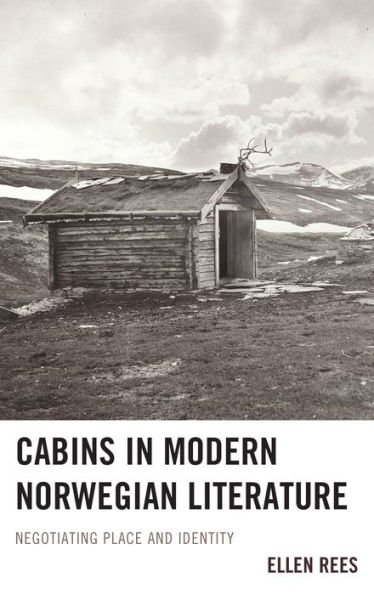Cabins in Modern Norwegian Literature: Negotiating Place and Identity
This book examines the significance of cabins and other temporary seasonal dwellings as important symbols in modern Norwegian cultural and literary history. The author uses Michel Foucault’s notion of the “heterotopia”—an actual place that also functions imaginatively as a kind of real-world utopia—to examine how cabins have signified differently during successive periods, from an Enlightenment trope of simplicity and moderation, through the rise of tourism, into a period of increasing individualism and alienation from nature. For each period discussed, the author relates a widely recognized real world cabin to a cluster of thematically related literary texts from a wide variety of genres. Cabins in Modern Norwegian Literature considers both central canonical works, such as Camilla Collett’s The District Governor’s Daughters, Bjørnstjerne Bjørnson’s Synnøve Solbakken, Henrik Ibsen’s When We Dead Awaken, and Knut Hamsun’s The Growth of the Soil, as well as less widely known literary works and texts from marginal genres such as hunting narratives and crime fiction. In addition, the book contains analyses of a few key films from the contemporary period that also activate the cabin as a motif. The central argument is that while Norwegians today tend to think of cabin culture as essentially unchanging over a long span of time, it has in fact changed dramatically over the past two hundred years, and that it is an extremely rich and complex cultural phenomenon deeply imbedded in the construction of national identity.
1117338167
Cabins in Modern Norwegian Literature: Negotiating Place and Identity
This book examines the significance of cabins and other temporary seasonal dwellings as important symbols in modern Norwegian cultural and literary history. The author uses Michel Foucault’s notion of the “heterotopia”—an actual place that also functions imaginatively as a kind of real-world utopia—to examine how cabins have signified differently during successive periods, from an Enlightenment trope of simplicity and moderation, through the rise of tourism, into a period of increasing individualism and alienation from nature. For each period discussed, the author relates a widely recognized real world cabin to a cluster of thematically related literary texts from a wide variety of genres. Cabins in Modern Norwegian Literature considers both central canonical works, such as Camilla Collett’s The District Governor’s Daughters, Bjørnstjerne Bjørnson’s Synnøve Solbakken, Henrik Ibsen’s When We Dead Awaken, and Knut Hamsun’s The Growth of the Soil, as well as less widely known literary works and texts from marginal genres such as hunting narratives and crime fiction. In addition, the book contains analyses of a few key films from the contemporary period that also activate the cabin as a motif. The central argument is that while Norwegians today tend to think of cabin culture as essentially unchanging over a long span of time, it has in fact changed dramatically over the past two hundred years, and that it is an extremely rich and complex cultural phenomenon deeply imbedded in the construction of national identity.
107.0
In Stock
5
1

Cabins in Modern Norwegian Literature: Negotiating Place and Identity
208
Cabins in Modern Norwegian Literature: Negotiating Place and Identity
208
107.0
In Stock

Product Details
| ISBN-13: | 9781611476484 |
|---|---|
| Publisher: | University Press Copublishing Division |
| Publication date: | 03/06/2014 |
| Pages: | 208 |
| Product dimensions: | 5.90(w) x 9.10(h) x 0.80(d) |
About the Author
From the B&N Reads Blog
